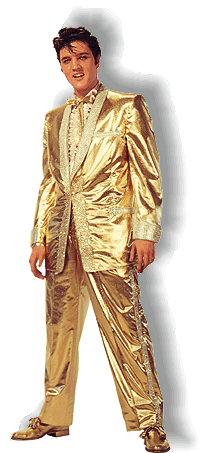 www.elvis.com
www.elvis.com |
Paradise Hawaiian Style 1 / 3
Elvis's twenty-first film was the 1966 Paramount release "Paradise,
Hawaiian Style."
The script was written by the team of Anthony Lawrence and Allan
Weiss, who had previously received accolades for the "Roustabout"
script. They collaborated again on "Easy Come, Easy Go." Anthony
Lawrence went on to write for many TV series as well as the 1979
television movie "Elvis," starring Kurt Russell.
"Paradise, Hawaiian Style" was directed by Michael D. Moore, who had
been an assistant director on six previous Elvis films. He and his
brother Pat began their careers as child actors in silent films in
the 1920s. Michael has continued to direct films. One of his latest
projects was working on the 2000 film "102 Dalmatians."
Elvis was ill for the first few days of preproduction for "Paradise,
Hawaiian Style," so the instrumentals for the soundtrack were
recorded without him the last week in July 1965. Elvis was well
enough to report to the set on August 2, 1965 and he was assigned to
Tony Curtis's former dressing room on the Paramount lot. He dubbed
his vocals for the soundtrack, had costume fittings and had an
insurance physical before the cast and crew flew to Hawaii for
location shooting on August. 5, 1965. Elvis and his entourage stayed
at the Ilikai Hotel.
The working title for this movie changed several times. Among them
were "Polynesian Paradise," "Hawaiian Paradise" and "Polynesian
Holiday." No matter the title, they were indeed in paradise. Filming
took place in Honolulu at the Hanalei Plantation Resort in Kaui, the
Maui Sheraton Hotel and on the Kona Coast. A number of scenes were
filmed at the LDS Polynesian Cultural Center on Oahu were Hawaiian
customs, music and culture are preserved. It was there that Elvis's
friend Jerry Schilling met his his future wife Sandy Kawelo, who was
a student and one of the Center's dancers in the film.
The choreography was handled by Jack Regas who was also serving as
the Center's choreographer. His career included a number of variety
series such as the "Phyllis Diller Show" and "The Filp Wilson Show."
He then went on to a career as a director.
Nelson Tyler was the helicopter photographer who provided all the
breath-taking Hawaiian footage. Over the years he has received two
Technical Academy Awards for his design and development of
helicopter camera systems. |

 www.elvis.com
www.elvis.com